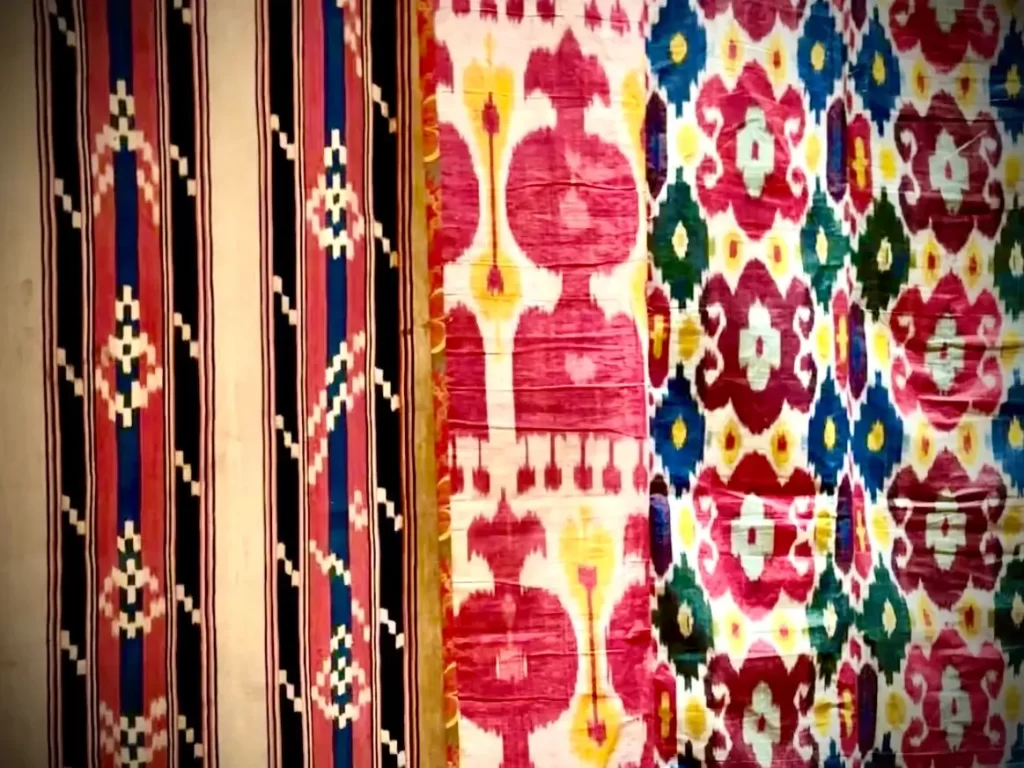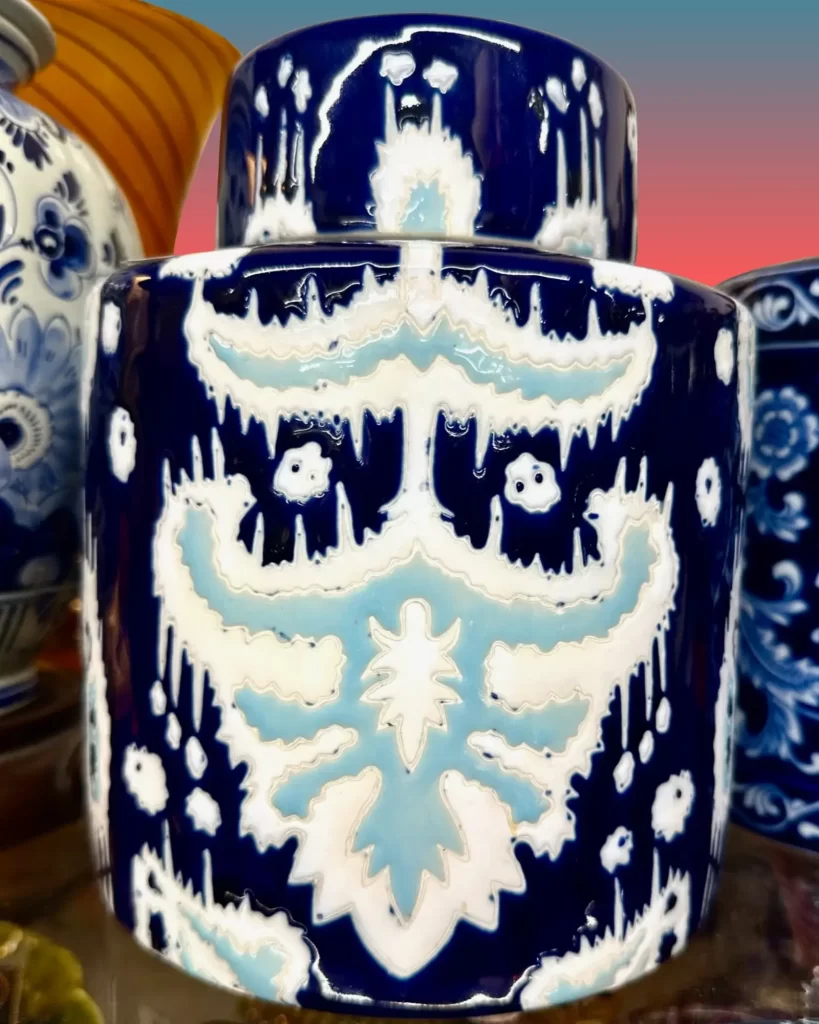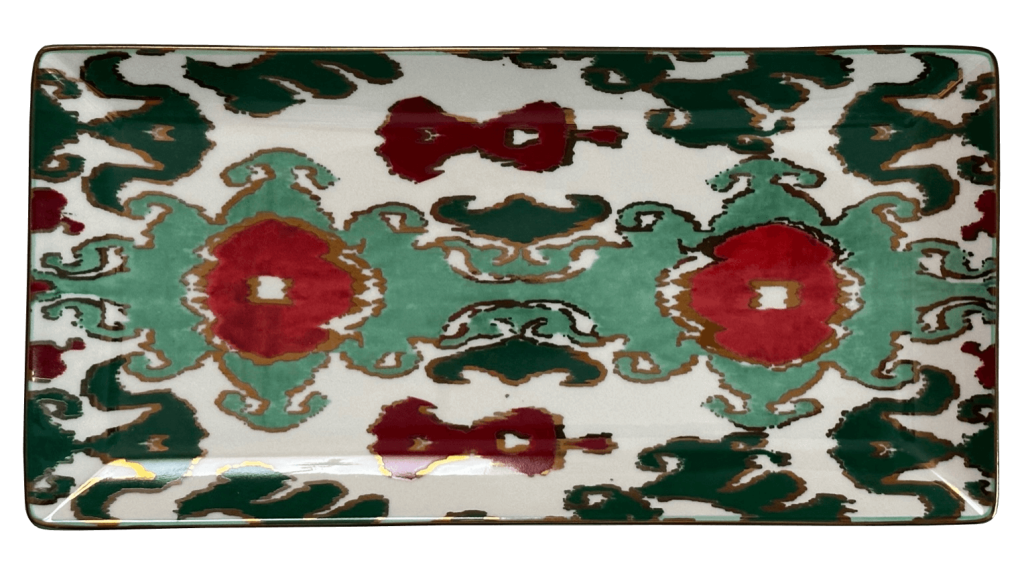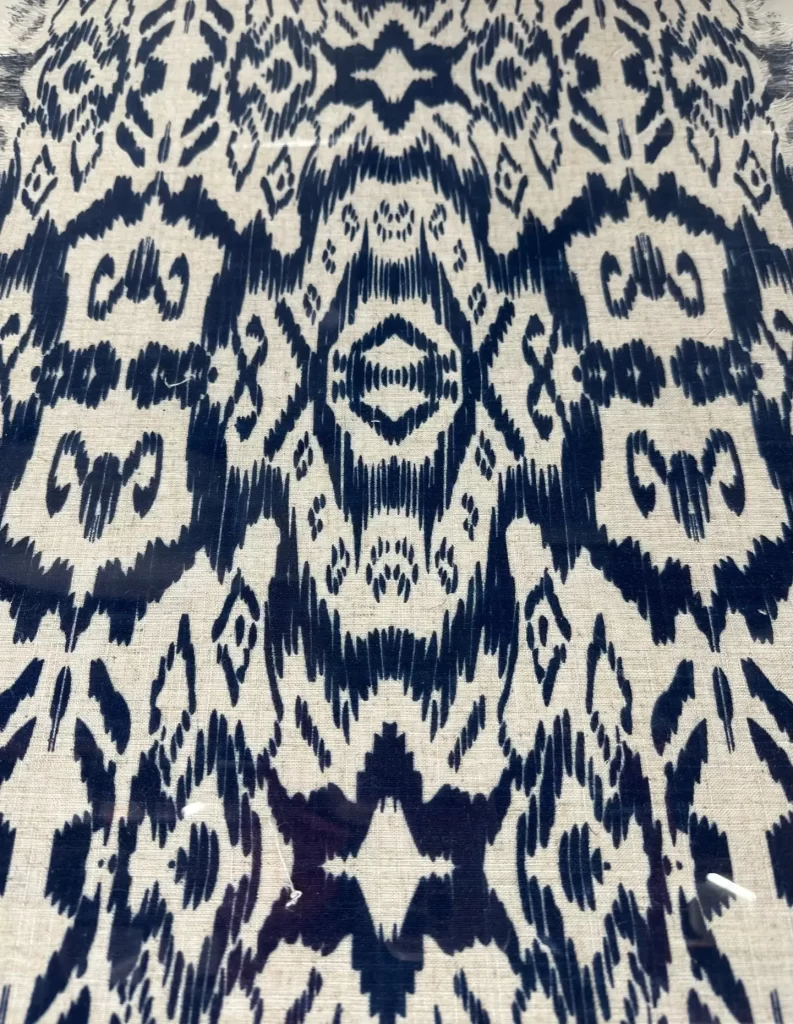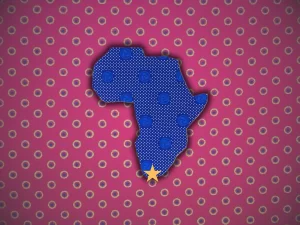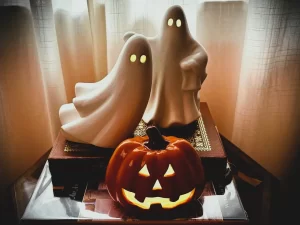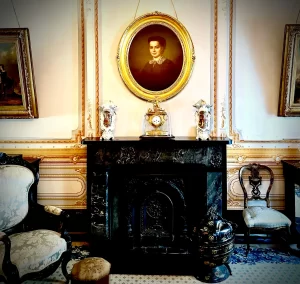Funny thing—I had actually intended to cover Ikat as my next blog post in the Pattern Recognition series quite some time ago. However, upon learning that the Seattle Art Museum was having an exhibition on this fascinating textile, I decided to hold off on publishing this post until I had the opportunity to visit the exhibition myself.
If you’re in Seattle and have a chance to stop by the art museum to see this exhibit, I highly recommend it! Curated by SAM’s Oliver E. and Pamela F. Cobb Curator of African Art, Pam McClusky, the exhibition features ikat-woven textiles from all over the world. It’s an excellent opportunity to appreciate how this art form travelled across continents and was adopted and adapted by numerous cultures. The exhibition runs until May 29.
What is Ikat?
Ikat (pronounced Ee•Kaht) is a textile and pattern that is produced by weaving resist-dyed yarns into a fabric. Individual yarns are bundled up and then small sections are bound along the lengths of the yarns before being dyed. These bindings create a negative “resist”, or areas where the dye does not penetrate and color the yarns. True ikat patterns are designed using this resist-dying technique at the yarn stage, rather than being dyed on finished woven fabric (as is the case with batik and tie-dyed fabrics) or printed. This produces the tell-tale variegated “blurry” look of traditional ikats, since lining up the pattern of the individual threads during weaving can be difficult. It also means that true Ikat fabrics have a double-faced pattern.
The yarns themselves are typically composed of natural fibers like cotton, linen, or silk. Traditionally, artisans have used natural dyes. The resist-dyed yarns can be woven in a number of ways, with warp weaving being the most common. A double Ikat fabric is one in which both warp and weft yarns are dyed and woven together, which is an extremely challenging technique due to the difficulty in lining up the pattern along two axes.

The actual origins of ikat are rather murky, but the tradition is prevalent in India, Central and Southeast Asia, and radiated outwards from Asia through the Silk Road. In fact, the word “ikat” itself is of Indonesian origin. It is derived from the Indonesian word ikatan, meaning tie or bond, and related to the Malay word mengikat, meaning binding. Both the word and fabric were introduced to the West by way of the Dutch East Indies.
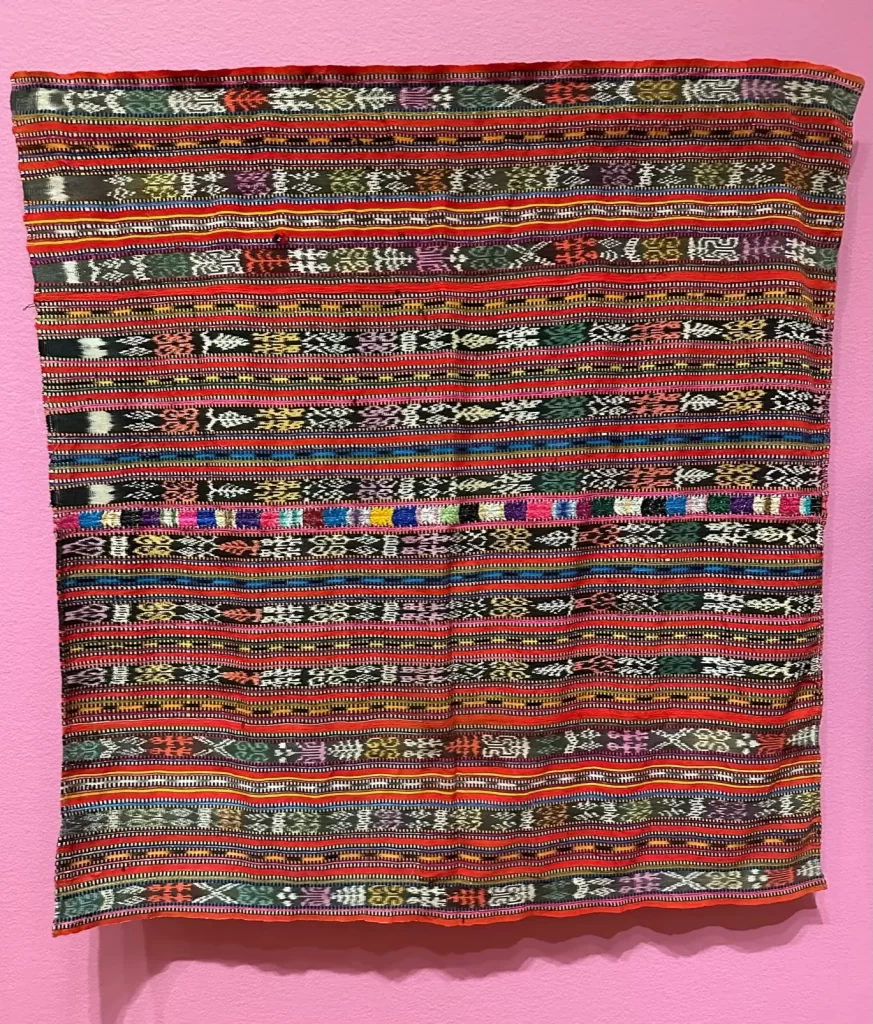
Ikat for Interior Designs
Ikat is considered an ethnic or “global” pattern and is most often used in interior designs with a bohemian or Asian aesthetic. However, when used strategically, it fits in especially well in eclectic interiors. Occasionally, ikat can be used in traditional interiors, particularly if the pattern is derived from a European antecedent.
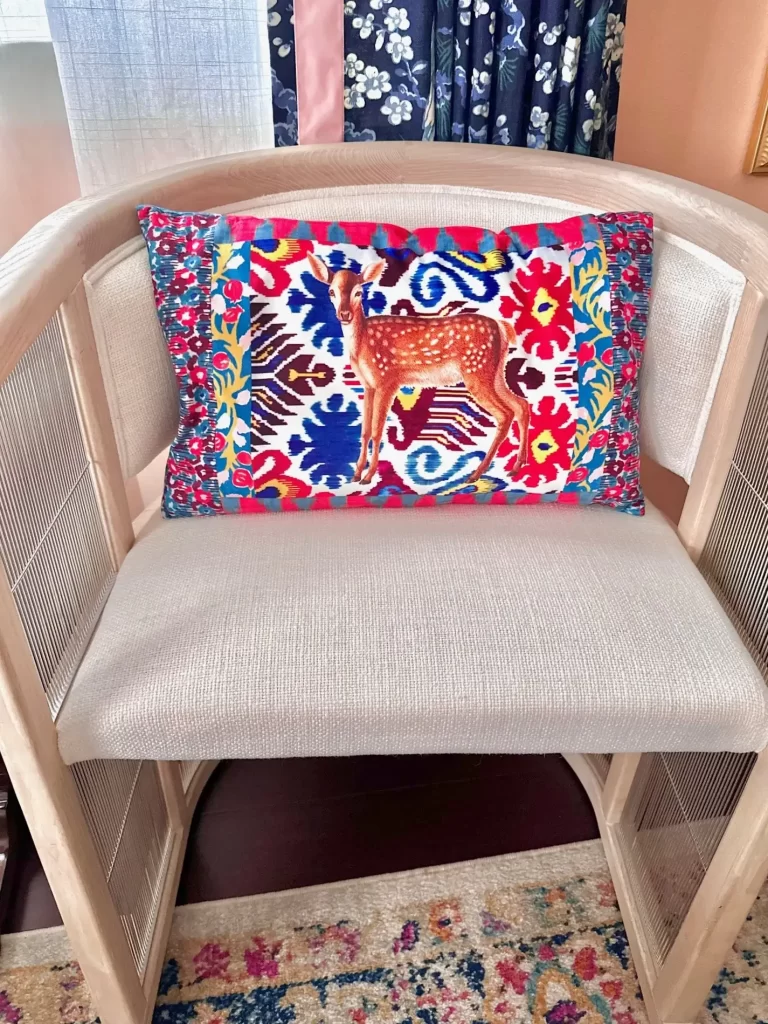
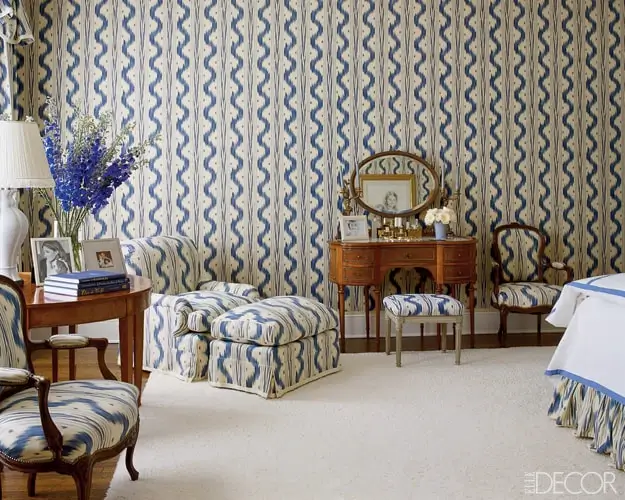
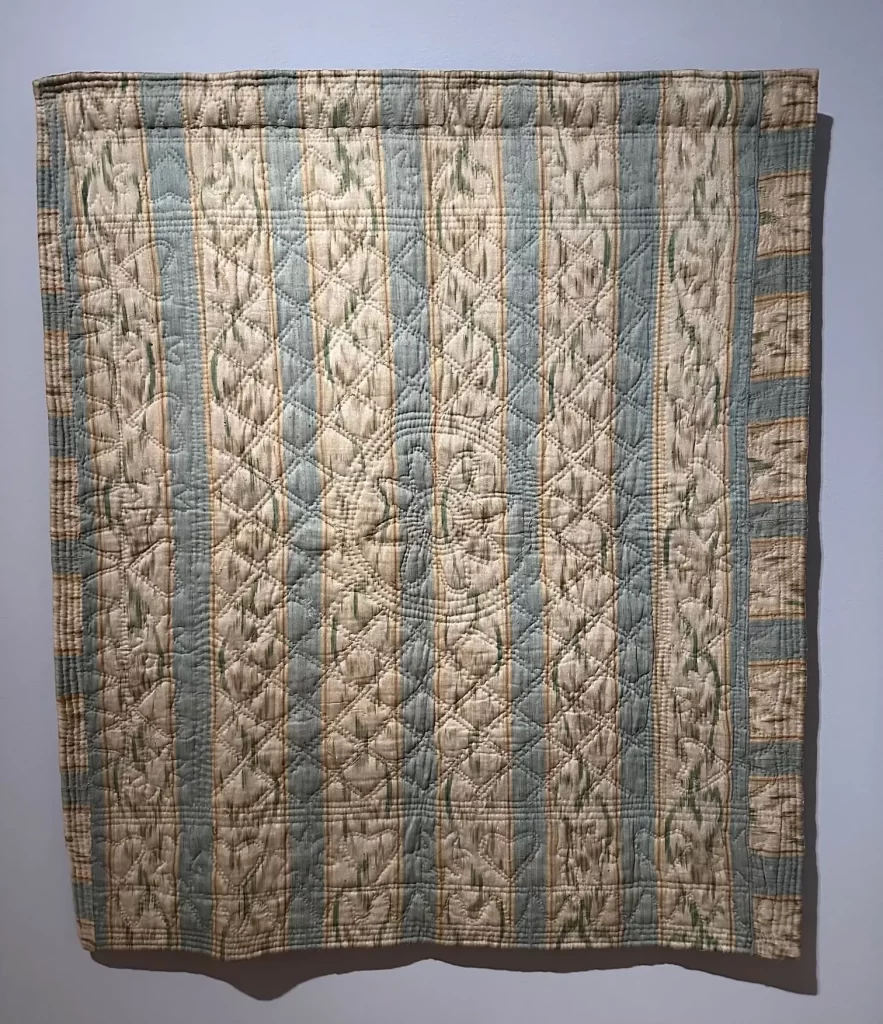
Ikat fabric is still produced around the world, but the laborious process makes true ikat expensive. Additionally, much of the true ikat yardage that is woven is not especially wide due to the smaller loom sizes used by artisans (most upholstery fabrics are produced in 54-inch widths), making it even more expensive to use for covering things like sofas, club chairs, walls, or bedding.
Instead, ikat fabrics produced for home decor are commonly printed or, less often, embroidered. This allows decorators and consumers to achieve the look of ikat at a less expensive price and at more practical yardage widths.
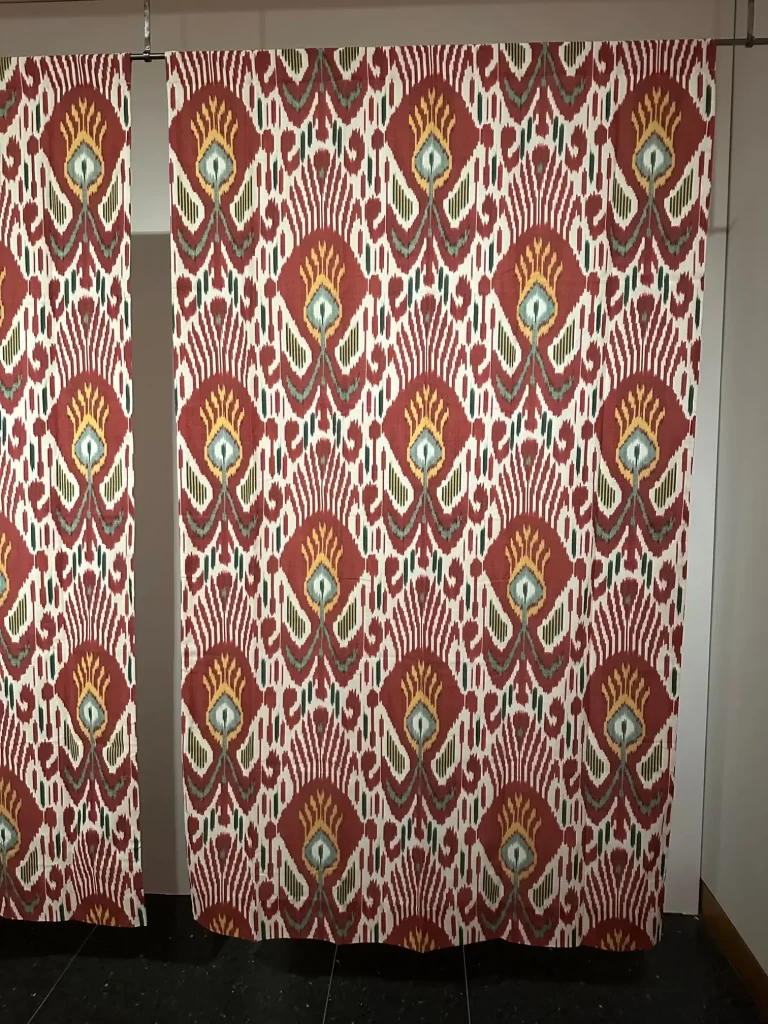
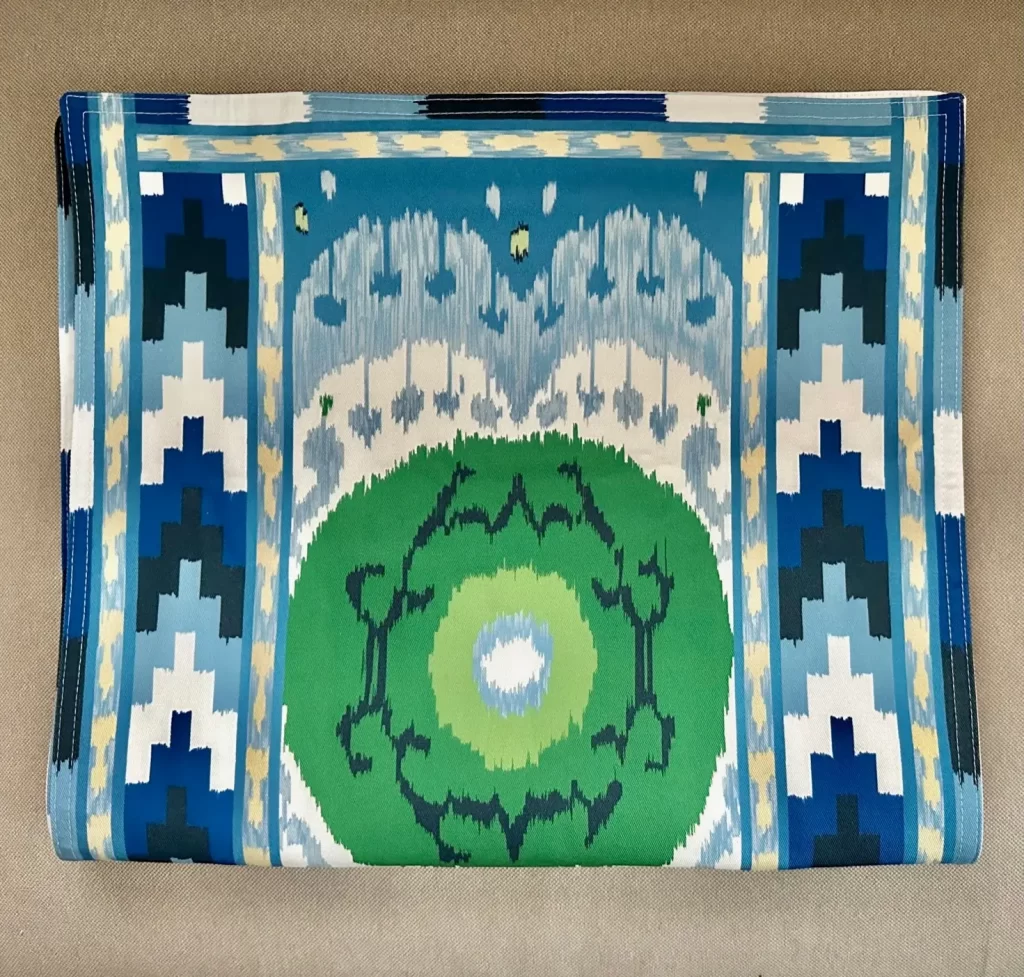
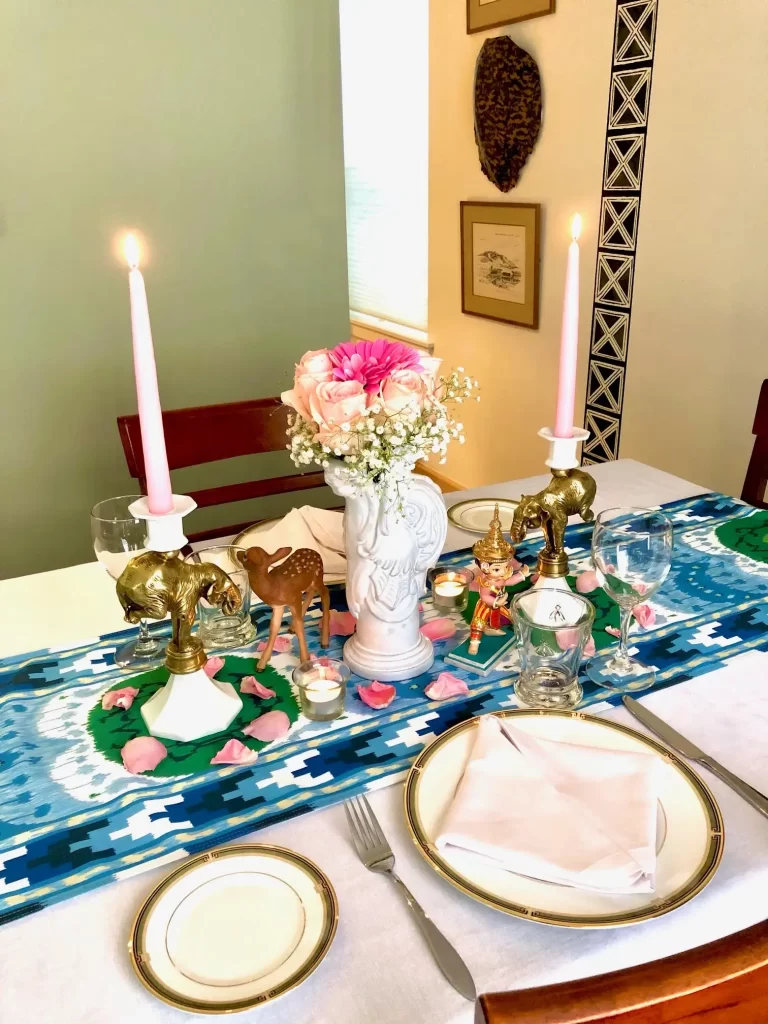
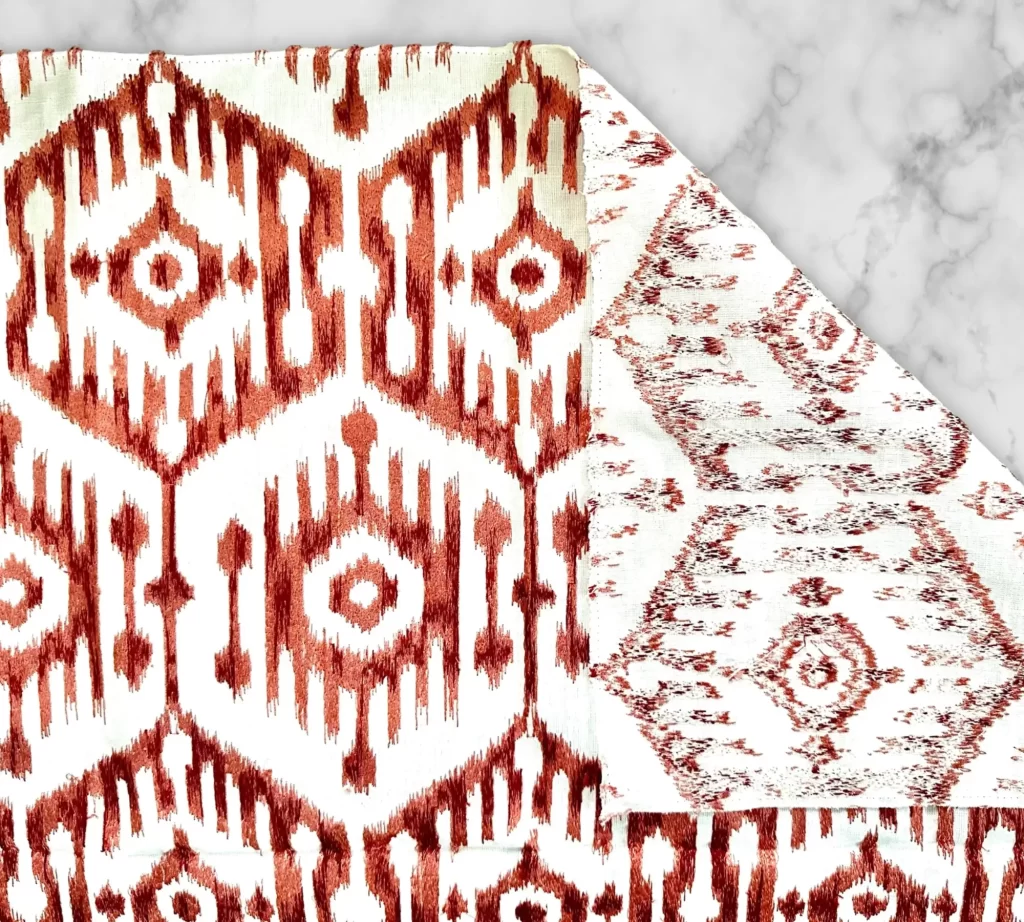
In addition, ikat patterns can pop up in other decorative items like ceramics and artwork.
Ikat for Everyone!
Ikat textiles have been created by many cultures around the world for centuries, with their highest production concentrations in Asia. As a result of trade through the Silk Road and the Dutch colonization of Indonesia, ikat became increasingly available to other countries where it became highly valued for its intricate patterns and vibrant colors.
Ikat’s rich cultural history continues into the present day, and it remains a popular textile for use in home decor.

